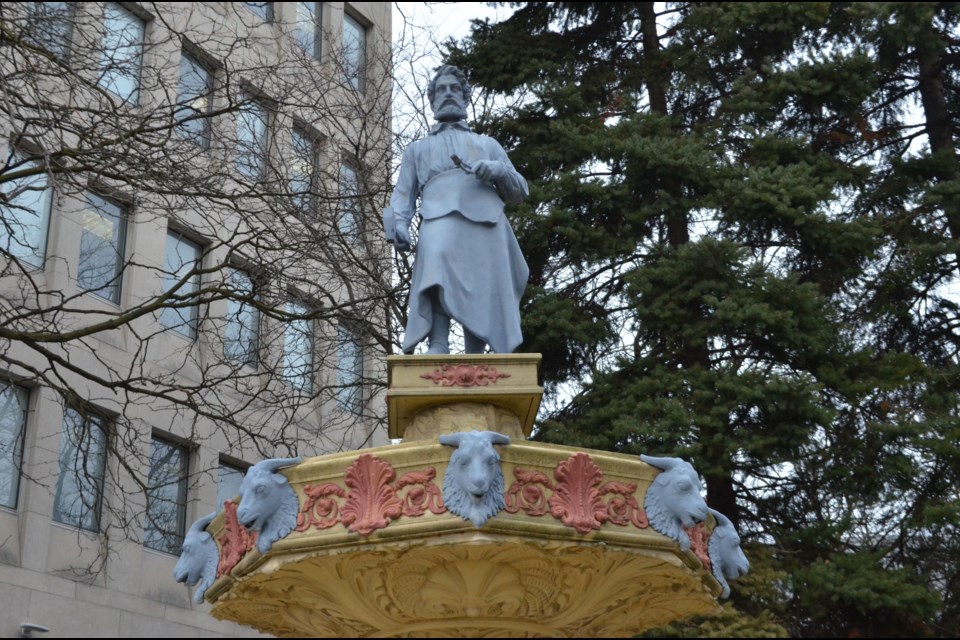Tucked away behind a bus stop on Macdonell Street across from the central public transit platform stands a monument to Guelph’s early industrial identity.
The Blacksmith Statue and Fountain once stood with pride and prominence in St. George’s Square at the very centre of Guelph’s economic and cultural activity.
It was a gift to the city from, local businessman John Belmer Armstrong who, among other things, was an alderman and owned the Guelph Carriage Goods Company.
The statue and fountain were officially unveiled on Victoria Day 1885 and stood in that spot until 1922 when, as fate would have it, city council voted to move it and make room for streetcar lines.
It was relocated to Priory Square overlooking the spot where, in 1827 city father John Galt felled the first tree and founded Guelph.
During its time there the fountain became a popular wading pool for local children.
It remained in that location until the early 1980s when it was moved again during construction of the former Eatons Centre Mall now the site of the Old Quebec Street Shoppes and the Sleeman Centre.
In 1988 it was designated for its historic and architectural value and protected under the Ontario Heritage Act.
An octagonal pool surrounds the red granite base with an inscription “Presented by J.B. Armstrong 1884”. A Rococo-style pedestal and base supports a cast-iron octogonal upper water basin ringed with rams head water spouts. The statue of a blacksmith wearing an apron and holding a hammer and pliers is cast in a zinc-metal alloy.
The blacksmith’s gaze is cast south toward Guelph Central Station Platform 2 and beyond - an icon of the past and a forger of the future.



